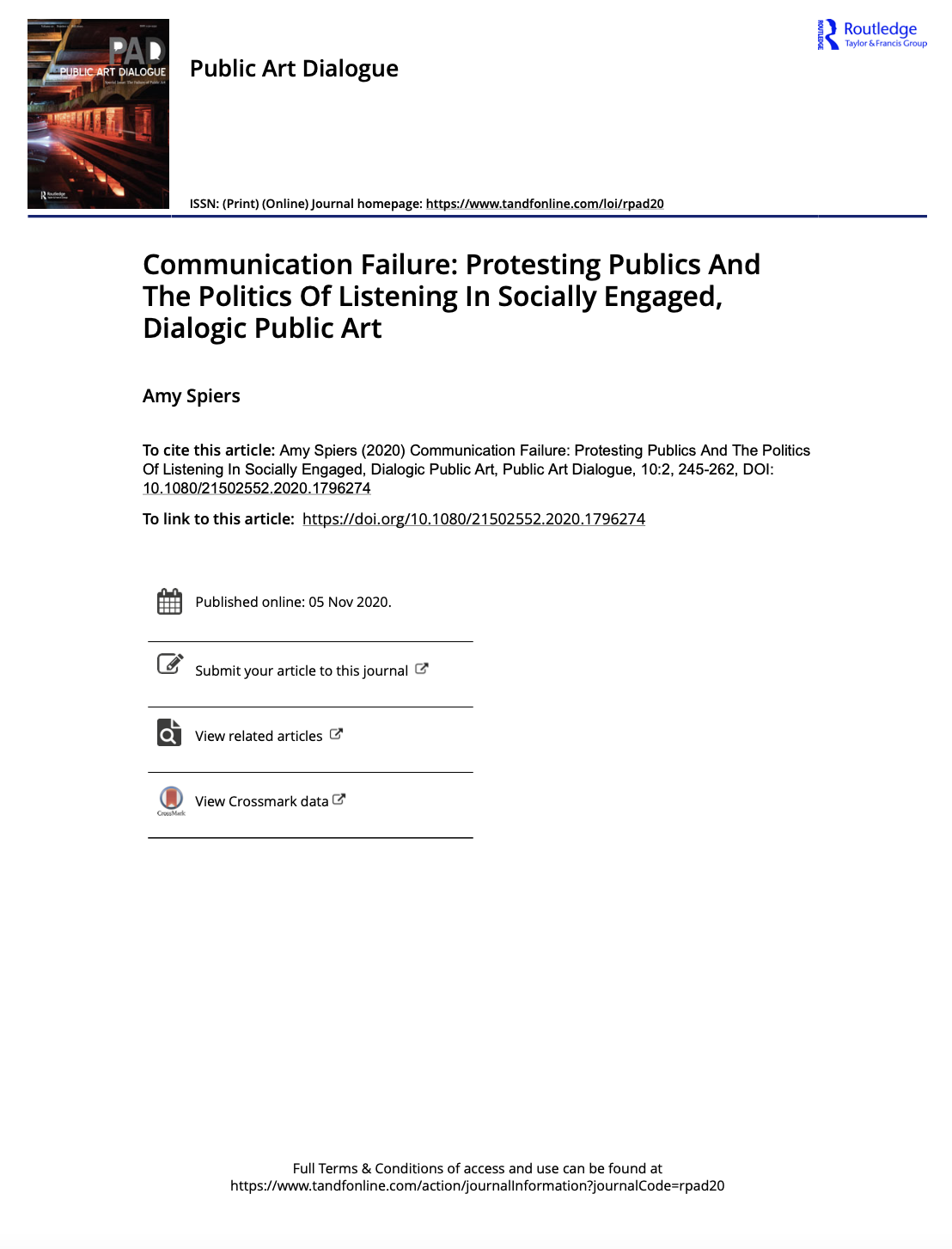COMMUNICATION FAILURE: PROTESTING PUBLICS AND THE POLITICS OF LISTENING IN SOCIALLY ENGAGED, DIALOGIC PUBLIC ART
Publication — 2020Journal article by Amy Spiers
Published in Public Art Dialogue 10, no. 2 (2020)

This article seeks to account for the disruptive and often unwelcome interlocutor of public art: the protesting and dissenting public. I do this through a discussion of two artworks by artist Suzanne Lacy, Code 33: Emergency, Clear the Air (1999) and Between the Door and the Street (2013), both projects that had a deep commitment to public consultation and collaboration during the development process and presentation, yet despite this, attracted protests from the activist communities the works’ sought to serve. I draw on anti-racist, critical whiteness and feminist theory, as well as recent scholarship on the politics of listening, to take seriously the nature of the disagreements raised by the protestors in each case. In doing so, I question the dialogic, collaborative models employed in Lacy’s projects, which found the protestors actions incompatible with the political aims of the works. I argue, however, that a politics of listening compels us to consider which speakers, and which speaking positions, get left out of the terms set by the dialogical, collaborative encounter. I contend that the protesting public could instead be considered generative, critically engaged interlocutors who bring attention to properly political questions that belong in the "good" narratives of public art.
Further information
︎ Public Art Dialogue
︎ Spiers, A. "Communication Failure: Protesting Publics and The Politics Of Listening In Socially Engaged, Dialogic Public Art." Public Art Dialogue 10, no. 2 (2020): 245-262.